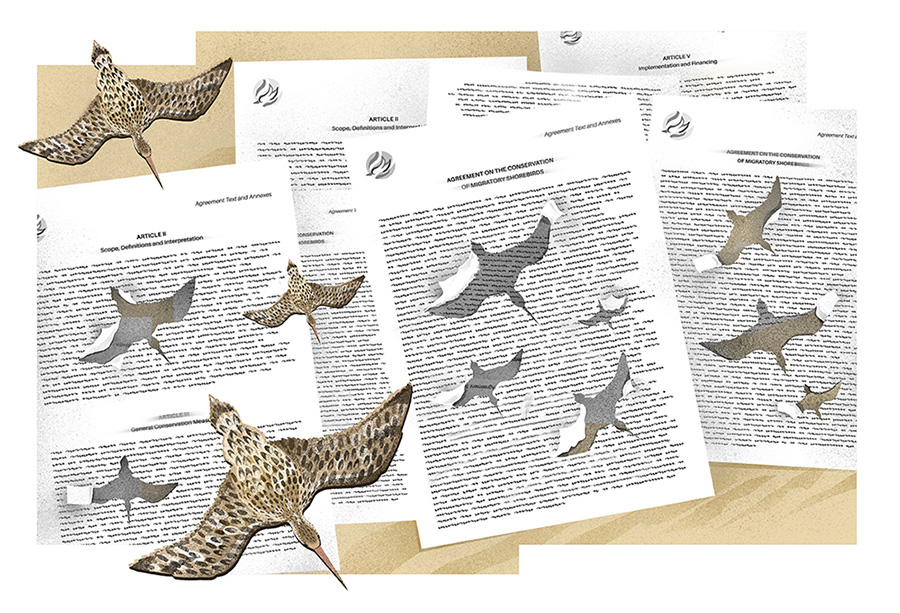As a lemur swings through the forest, consuming fruit, it inadvertently contributes to the persistence of the forest flora. Forest regeneration and ecosystem functioning are not at the forefront of the lemur’s to-do list. Rather, when the lemur enjoys its meals, seeds are consumed and, via faeces, distributed throughout the forest. However, the logging of huge tracts of forests at an alarming rate creates a dire survival situation for arboreal, foraging primates, and a negative feedback loop ensues. As the trees in the forest are felled, available habitat declines and many species are unable to remain in the forest consuming fruits. In turn, the seeds they would normally digest and defecate are no longer dispersed throughout the forest. Other organisms with tree-dwelling and foraging ecological traits will have similar effects on ecosystem functioning. Many plants rely on larger consumers, such as lemurs, to disperse their seeds, and without these obligate dispersal partners, the plants cannot effectively maintain their populations. Thus, there is a domino effect with extinction.
Plants and animals possess ecological traits that directly mediate ecosystem services. In the primate-logging example, not only are the lemurs at risk of extinction, but the important ecosystem functions (seed dispersal) they provide are also at risk. However, if we can assess extinction risk in terms of ecological traits, we can obtain a clearer image of the cascading effects that may result from their loss. Yet, the consequences of the biodiversity crisis are typically measured in terms of population loss or individual species extinctions. Due to the differences in ecological and taxonomic diversity, our research team was particularly interested in another equally important aspect of the biodiversity crisis: the ecological functions that are at risk of being lost and the associated consequences.
Ecological traits at risk of extinction
We assigned terrestrial vertebrate (amphibians, reptiles, mammals, birds) species to three core ecological niche axes (habitat association, mode of locomotion, and feeding mode) and tested for associations with their extinction risk status. We found that cave-dwelling amphibians, primates that live in trees and use all four limbs for locomotion, aerial and scavenging birds, and scaled reptiles that use walking locomotion are all disproportionately threatened with extinction (high-risk ecological categories). The loss of ecological functions associated with these traits has the potential to disrupt ecosystem processes and services on global scales.

Risk factors of extinction
We identified the threat types contributing to endangerment across all terrestrial vertebrates. Agriculture is a dominant human influence on our planet and we discovered that it is the single most common threat type to terrestrial vertebrate species globally. Further, we examined the connection between the high-risk ecological categories and their primary extinction threat types. For example, primates that live in trees and use all four limbs for locomotion are most threatened by agriculture, hunting, and logging.
The ‘death by a thousand cuts’ hypothesis
We examined the total number of extinction drivers threatening terrestrial vertebrates as a whole and within each taxonomic class and found that species at greater risk of extinction are on average affected by a greater number of extinction threat types. Thus, following a death by a thousand cuts scenario, where a species may tolerate one or two extinction drivers, but as the number of threats increase, the species’ vulnerability to extinction also increases.
Our study demonstrates that certain ecological traits make a species more vulnerable to extinction. The preferential loss of ecological traits in conjunction with increasing human disruption, has the potential to have global consequences. By identifying the threat types most strongly associated with endangerment of ecological traits, we take a critical first step towards ameliorating these global functional disruptions.
Further Reading
Munstermann, M. J., N. A. Heim, D. J. McCauley, J. L. Payne, N. S. Upham, S. C. Wang, M. L. Knope. A global ecological signal of extinction risk in terrestrial vertebrates. Conservation Biology 36(3): e13852. doi: https://doi.org/10.1111/cobi.13852.






